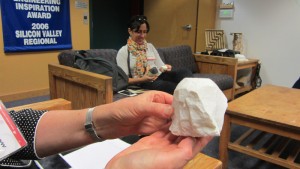After a number of discussions with educators, colleagues and “makers” it might be useful to look at the Maker Movement and its relationship to education.
Background
Indications here are that US schools started to lose their “shop” facilities sometime in the last two decades, in response to perceived lack of relevance in the modern economy and in an era where making was something that happened in factories. Thus a generation of students did not gain the basic skills in using a range of materials. The emergence of “no user serviceable parts inside” devices, cars that could not easily be repaired at home, cheap furniture and appliances and in particular the rapid changes brought by digital electronics meant that interest was lost in actually making things.
An example was the teacher who told us how when his father was at a well-known university there were fabrication workshops on each floor where students were expected to construct their own prototypes. then when he attended there was one per building, then finally the whole construction side of things was outsourced to some contracting team.
A backlash seems to have emerged, from a confluence of the “craft” movement along with those who see a future in universal coding skills and the launch of low-cost smart manufacturing machines. Along with other forces, this has created a “perfect storm” where the importance of thoughtful design and actual hands-on making have gained recognition.

photo – 3D printed stone tool, to allow students to actually feel how a shaped tool fitted the hand and to speculate on its likely use.
Next post – impact on education
